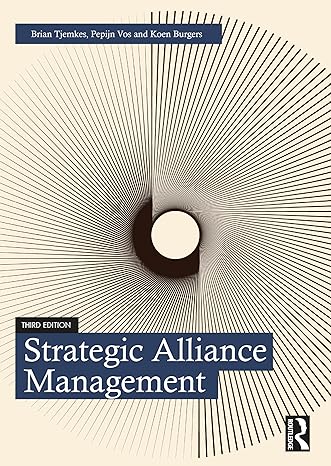Organovo was founded in 2007 with the intention of commercializing organ printing technology developed by the University
Question:
Organovo was founded in 2007 with the intention of commercializing organ printing technology developed by the University of Missouri—Columbia. In 2009, Organovo opened its laboratory in San Diego and focused primarily on printing blood vessels. In 2012, Organovo went public and started a partnership with Autodesk research to develop 3D bioprinting software. In the following year, Organovo became involved in cancer research and received a stock listing at the New York Stock Exchange. In 2014, Organovo released the exVive3D Human Liver Tissue. The printed tissues remained stable and functional for more than 40 days and were made available for preclinical in vitro testing to provide predictive liver tissue–
specifc toxicity marker assessment. Following these technological advances, Organovo forged multiple partnerships.
In 2015, L’Oréal’s Technology Incubator announced a partnership with Organovo to develop 3D bioprinted human skin tissue. L’Oréal S.A. is a French cosmetics company with its headquarters in Clichy, France. Although L’Oréal started with hair colouring products, after the Second World War, the company soon ventured into other felds of the beauty industry. Currently L’Oréal offers more than 500 brands and several thousands of individual products in all sectors of the beauty business. L’Oréal aims to be an innovative frontrunner in the business. Therefore, the company has developed a technology incubator that enables it to develop technologies and uncover disruptive innovations across industries that have the potential to transform the beauty business. One focus area concerns products with skin applications. The availability of human skin is critical for L’Oréal to develop its products. L’Oréal also offers skin to implant on the human body to replace damaged or diseased skin tissue. The production of human skin is a costly and time-consuming activity.
L’Oréal tries to avoid animal testing and therefore farms human tissue using its research laboratory in Lyon. L’Oréal produces approximately 100,000 skin samples annually, which translates to roughly 5 m2 of skin per year. This is a complex procedure that requires donations from plastic surgery patients in France. To increase skin production and accelerate skin production through increased automation, L’Oréal turned to Organovo and initiated a research partnership. Specifcally, the partnership aims to develop 3D printed human 76 Alliance design tissues, which can be used for product evaluation and other areas of advanced research. Organovo will introduce its proprietary NovoGen Bioprinting Platform. This 3D printing platform has been developed by Organovo and its partner Invetech to print human tissue. The initial application of this platform was printing blood vessels and nerve conduit, but Organovo has expressed that potentially any tissue or organ can be built. Together with L’Oréal’s expertise in skin engineering, the two partners aim to develop a commercially viable solution. The partnership design consists of three consecutive phases. During the solution development stage, the partners deploy a stage gate design. At each stage gate, the partners have the ability to end the collaboration. During this phase, a technological and viable solution is developed. According to Organovo, the printing of human skin will be roughly similar to that of printing liver samples. Although the actual printing is not very different from ordinary 3D printing, the nourishment of the cells requires in-depth scientifc knowledge. The technology developed will be thoroughly tested in the following phase. Given the objective, L’Oréal seeks the ability to speed up the production of human skin. This requires Organovo to further industrialize the technology to become economically viable. This is the focus of the second stage of the partnership. For both these phases, L’Oréal will provide up-front funding. The third and fnal phase of the partnership consists of the development of a viable business model. In this phase, L’Oréal and Organovo will create a commercial supply agreement that will include customary licensing and royalty terms. The agreement will provide L’Oréal with exclusive rights to the skin tissue that the two companies develop. These rights will remain intact for the purposes of development, testing, manufacturing, evaluation and sale of non-prescription skincare products and nutraceutical supplements. Organovo will retain the rights to these tissue models for effcacy testing of prescription drugs, toxicity tests and the development and testing of therapeutic or surgically transplanted tissues. For Organovo, this partnership is the frst application of the technology that the company created in the beauty industry. Through the technology, Organovo can automate the creation of skin tissue while mimicking the form and function of native tissues in the body.
Questions 1 Why would L’Oréal and Organovo opt for a non-equity governance form, and which supportive contractual clauses could be used to steer the alliance towards its objectives?
2 What control and coordination mechanisms are used (or should have been used) to enforce relationship governance and deter opportunistic behaviour?
3 Comparing the Organovo–L’Oreal and Organovo–BICO partnerships, what alliance design diferences exist, and why?
Step by Step Answer:

Strategic Alliance Management
ISBN: 978-1032119250
3rd Edition
Authors: Brian Tjemkes ,Pepijn Vos ,Koen Burgers






